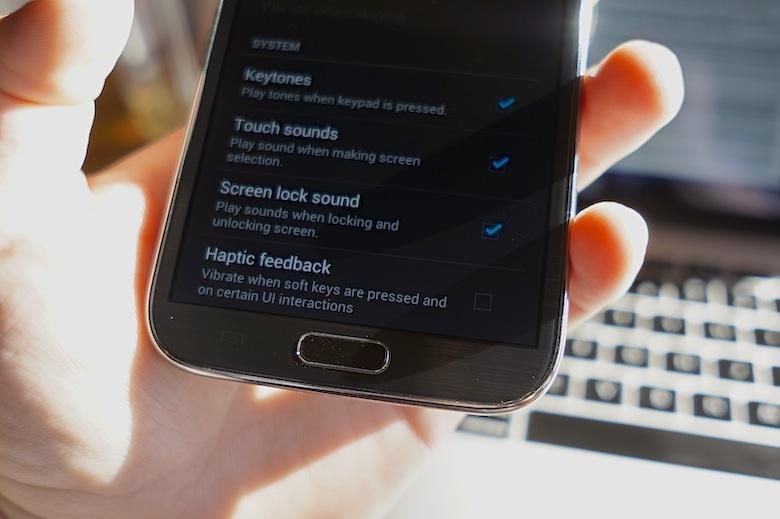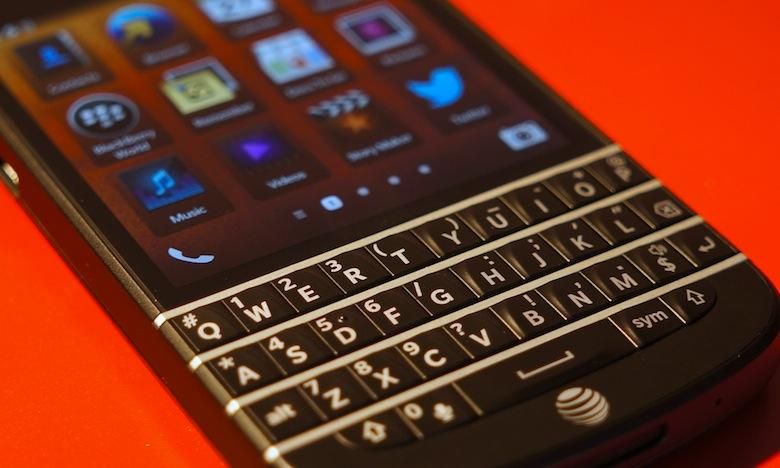The first boot is always my least favorite time with a new phone. It’s not because I know I’ll have to spend a few hours – sometimes even days – setting up the phone and digging through settings, trying to remember how I had my last phone setup.
I actually enjoy that aspect (except for logging into all the different accounts I have, since I use LastPass and don’t actually know my passwords). It’s exciting. Who doesn’t love the honeymoon phase?
No, I’m talking about the first few dozen taps and even the first few minutes with a new soft keyboard – the time it takes to find and disable all haptic feedback.
Michael and I were talking about it on a Hangout last night. I don’t remember how or why we were talking about haptic feedback, but I said the magic words that made his jaw drop: “I hate haptic feedback, it’s always the first thing I disable.” I fly through the setup process with as few taps as possible, open Settings, open the Sound submenu, scroll to the bottom and uncheck the Haptic Feedback field. Every time. I can practically do it with my eyes closed.
First, about haptic feedback. It’s a tactile feedback system which uses different forces and vibrations to indicate a specific action. The best non-mobile examples that come to mind are the Xbox 360 and PS3 DualShock controllers. Various in-game actions trigger a sharp vibration in the controller. For instance, in a first-person shooter, the controller vibrates when you get shot.
In smartphones, of course, haptic feedback occurs when pressing the capacitive buttons and sometimes with other on-screen actions. For example, even with haptic feedback disabled, long-pressing on the home screen will trigger a subtle vibration.
Most people never give haptic feedback a second thought. It’s just something that happens when you press certain buttons. It’s a physical indicator that rattles your bones and lets you know you’ve pressed a button.
So why do I hate it? Why does it bother me so much that I literally despise turning on a new phone or flashing a new ROM? Why is disabling haptic feedback always the very first thing I do with a new phone?
Haptic feedback attempts to simulate the key press feedback of a physical keyboard.
Mainly, haptic feedback aims to solve a problem that no longer exists.
One of the most popular uses of haptic feedback in smartphones has been in use with soft keyboards. Each letter press triggers a short vibration, letting the user know they’ve pressed a key. Initially, it helped ease the transition to typing on alienating glass slabs, versus a physical keyboard with mechanical keys.
But after you’ve been dealing with every type of smartphone for four years, you begin to notice the subtleties in software, visual indicators that a tap was accepted – a tiny flash around an icon, for example. And haptic feedback becomes redundant when you begin seeing all these tiny cues.
In some ways, this can be paralleled with skeuomorphs and photo realism in software. Fanned pages in an e-reader app implies pages can be turned by dragging them towards the faux spine. But after you’ve read a book or two and used more than one e-reader app, you know this page turning gesture is commonplace.
Once you notice the visual cues, however, haptic feedback serves no real purpose. It doesn’t give you any additional information.
I realized this a few years ago, so I switched it off.
Haptic feedback is supposed to be subtle. It’s meant to offer confirmation in a minimal way. The moment it isn’t, it sort of defeats the purpose. Think of it like sitting in a room with a barking dog. If the dog has been barking all along, it’s not so bad. But when the dog stops barking for a moment and the room goes silent, you realize just how annoying it actually was the next time it happens.
For me, haptic feedback is exactly like that. I feel it and I cringe. Then I have a knee-jerk reaction and shut all haptic feedback off.
It’s like … nails on a chalkboard.
Tell me, readers. Do you disable haptic feedback? Or, like Michael, do you like it and leave it enabled all the time?


